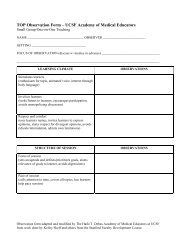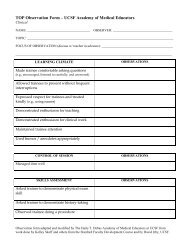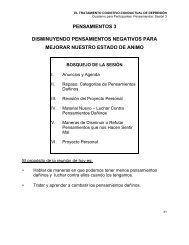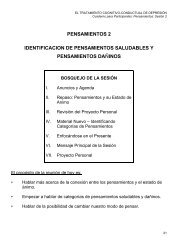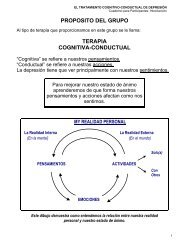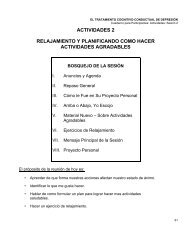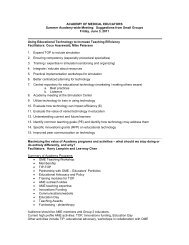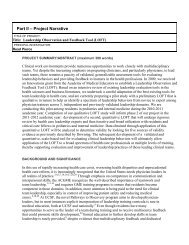The Healthy Management of Reality - Stanford University
The Healthy Management of Reality - Stanford University
The Healthy Management of Reality - Stanford University
You also want an ePaper? Increase the reach of your titles
YUMPU automatically turns print PDFs into web optimized ePapers that Google loves.
When a patient appears to be drowning with the weight <strong>of</strong> his or hersubjective or objective burdens, the therapist must first dive into the water with thepatient, experience as much as one can the desperate feeling <strong>of</strong> imminentasphyxiation the patient is undergoing, and only then attempt to guide the patientto the surface. One does this by listening to the patient, trying to obtain not onlythe facts, but also the meaning these facts have for the patient. And then one mustsay these things back to the patient, so the patient can hear that someone else hasunderstood not just what happened, but the impact <strong>of</strong> what happened on his or herbeing.But it is also important not to stay underwater too long. Once the patient hasseen that we have followed them to the depths, they must also see that we can showthem a way out. We must help them swim to the surface and help them get thatgulp <strong>of</strong> air that tells them that there is hope still. Only then will they be able tobegin swimming to shore.<strong>The</strong> treatment <strong>of</strong> the patient involved many interventions. But changinghow she remembered her son was a very important one. What we did was to haveher imagine her son's life as though it were a line, from his birth to his death. <strong>The</strong>line was 17 years long, and it did end in tragedy. But, as she remembered her son,she had gotten used to looking at his lifeline as though looking through a telescope.And, because his death had shocked her so much, it was this horrifying eyepiecethat filled her field <strong>of</strong> vision, blocking out the bulk <strong>of</strong> his life. We asked her tovisualize turning the telescope, so she could see it from the side, to notice how longit was, and how many things had happened throughout the son's life, and to be ableto remember those things without filtering them through his death. She was able toremember that he was a prankster, a kid with a good sense <strong>of</strong> humor, with a heartylaugh. <strong>The</strong> memories triggered a smile in her, for the first time in therapy.HMOR.July2005.Muñoz.doc 47



